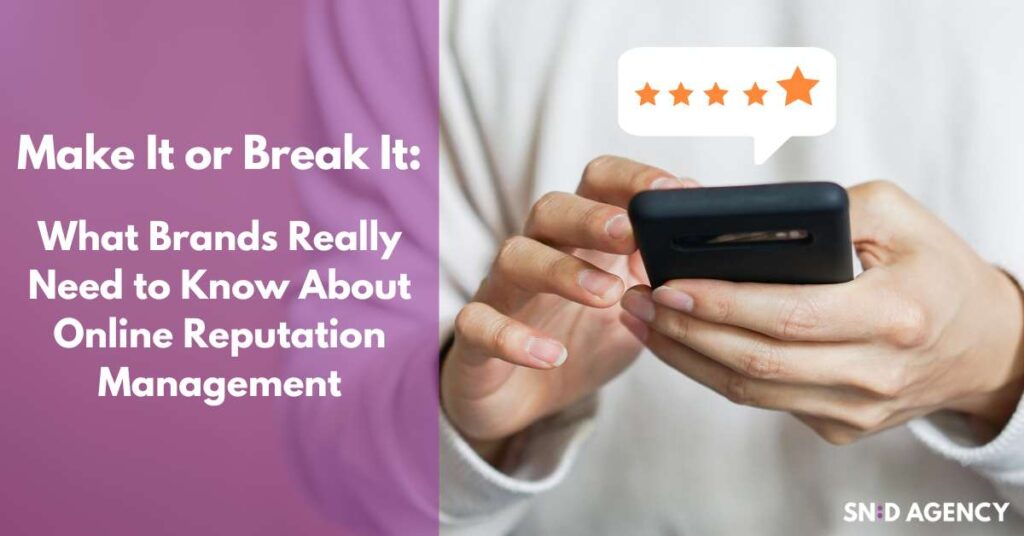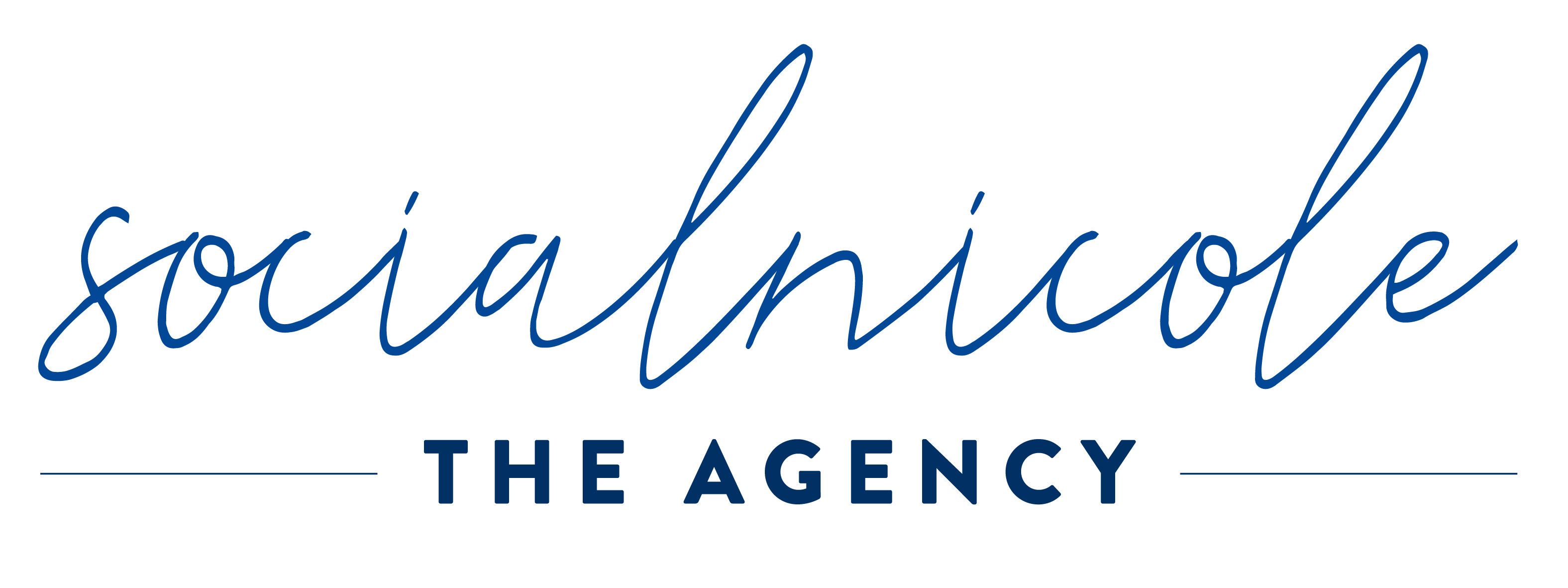
A brand’s online reputation simply refers to the way a brand is perceived on the internet, and that perception among customers (or potential customers) can either make or break a brand’s success. With the rise of new-age social media (such as short-form video platforms like TikTok and Reels), in addition to web reviews, consumers have more power than ever to shape the conversation of a brand online.
That’s why it’s so crucial for businesses to take a proactive approach to online reputation management. As a seasoned social media and digital marketing expert, I have seen firsthand the impact a negative online reputation can have on a business. Unfortunately, once the damage is done, the process of repairing a negative online reputation is expensive and much more complex than proactively building up a positive reputation each day. The worst thing a business or a brand can do is wait until it becomes a problem
Today I’ll be talking about what exactly goes into online reputation management and why it’s so crucial for brands and businesses to build up their online reputation daily. I’ll also be sharing some of the best practices that businesses can follow to improve their online reputation and build trust with their customers. Whether you are a small business just starting out or an established brand looking to improve your online presence, there are realistic practices you can put into place to protect and polish your brand’s name in the digital realm.
What Is Online Reputation Management?
At its core, online reputation management involves monitoring and influencing how a brand is perceived online. This includes tracking brand mentions on social media, review sites, and other online platforms, responding to customer feedback, and addressing negative comments or reviews. Online reputation management also involves promoting positive brand content, such as customer testimonials and success stories, to build trust and credibility with potential customers.
It may also involve optimizing a brand’s online presence through search engine optimization (SEO) and content marketing strategies to ensure that positive content about the brand appears prominently in search results. Effective online reputation management is all about proactively shaping how a brand is perceived online and building a positive relationship with customers.
Online Reputation Management has several components, including:
- Online Reviews Management: Managing online reviews is crucial because the comments people leave can significantly impact future consumer behavior and their perception of your brand. A huge percentage of consumers read online reviews before making purchases, and a single negative review can have a huge impact on a brand’s reputation. By actively managing online reviews and responding to both positive and negative feedback, businesses can demonstrate their commitment to customer satisfaction and show that they value their customers’ opinions. This can help build trust and loyalty with customers and can also help mitigate the impact of negative reviews by addressing issues and offering solutions. With the right response and approach, you can turn a disgruntled or dissatisfied reviewer into someone who’s willing to give you a second chance (and talk you up to others as well).
- Social Media Management: This involves a lot of moving pieces, from monitoring social media accounts and engaging with followers to responding to comments and messages. This also includes building content strategy, crafting content, and following a content calendar. Social media management also involves planning and executing an advertising strategy to help reach a brand’s goals, whether that’s leads, traffic, or engagement. In general, social media management ensures the brand’s message is consistent across all platforms.
- Content Marketing: Content marketing is what allows businesses to establish themselves as credible and trustworthy sources of information. A great way to build trust among your target audience is by sharing content that adds value to your customer’s lives and meets their needs in some way. This can be a major boost for your online reputation because it demonstrates expertise and authority in the space you occupy and shows you know what you’re talking about. Content marketing can also help businesses generate positive buzz and conversations online, which points positive attention back to your brand.
- Search Engine Optimization: SEO controls what people see when they search for a particular brand or individual online, so it’s a crucial part of online reputation management as well. You can’t get talked about if you don’t get seen. By optimizing your content on search engine results pages (SERPs), businesses can push down negative or damaging content and highlight positive content. People often form opinions on their first search results, and hardly even look past the first page of results, so getting positive content to the top of that search is huge. Effective SEO techniques can also help improve website rankings, increase visibility, and attract more traffic to the website, which can ultimately contribute to a stronger online presence and reputation.
Why is Online Reputation Management Important for Brands?
In today’s highly competitive business landscape, a brand’s online reputation is more critical than ever. With the rise of social media and online review platforms, consumers have access to a wealth of information about products and services and rely heavily on this information to make purchasing decisions. A brand’s online reputation can make or break its success, with negative reviews or comments potentially damaging its credibility and driving customers away. In this section, we’ll explore why online reputation management is so crucial for brands in the digital landscape and how it can impact a brand’s success in the long run.
Benefits of a Positive Online Brand Reputation
- Builds Trust and Credibility: A positive online reputation can help to build trust and credibility with customers. When consumers see positive reviews and feedback about a brand, they are more likely to trust and consider it for their purchase decisions. On the other hand, negative reviews and feedback can erode trust and credibility, making it harder for a brand to attract new customers.
- Enhances Brand Image: Online reputation management can enhance a brand’s image by showing the best face of the brand online. By monitoring and responding to online content, whether reviews, shares, or comments, brands can ensure that its message is consistent across all platforms and that it’s an accurate representation of that brand’s values.
- Increases Sales and Revenue: When a brand’s reputation is positive among customers, it’s natural for that perception to lead to increased sales and revenue. When consumers trust and respect a brand, they are more likely to purchase its products or services (and tell others about it)! Positive reviews and feedback feed into increased word-of-mouth referrals, which can further boost sales.
- Mitigates Negative Publicity: Online reputation management can help to mitigate any potential or future damage to a brand’s reputation. By monitoring and responding to negative reviews and feedback, a brand can address issues and take steps to prevent them from happening again.
- Helps to Attract and Retain Talent: A positive online reputation is not only a selling point with customers; it’s important for growth and hiring as well. A positive reputation can help a brand attract and retain top talent and make your business stand out as a company people want to work for. When job seekers research companies online before applying, they’re also going to look at what people who have interacted with your brand are saying.
Best Practices for Online Reputation Management
Effective online reputation management requires a strategic approach and ongoing effort. It involves much more than just responding to negative reviews or comments. A comprehensive online reputation management strategy should be proactive, focusing on building and maintaining a positive online presence for your brand.
Here are some best practices for online reputation management that can help you achieve your business goals:
- Monitor Your Online Presence: This includes monitoring social media platforms, review sites, and search engine results. By monitoring your online presence at all times, you can quickly respond to negative comments and reviews.
- Respond to Negative Feedback: It’s essential to respond to negative feedback promptly and professionally. When responding to negative feedback, it’s important to acknowledge the customer’s concerns and offer a solution to the problem. This shows that you value their feedback and are committed to resolving it.
- Encourage Positive Reviews: Encouraging positive reviews proactively is essential for brands as it can offset the impact of future negative reviews. It can also help businesses identify areas of improvement and better understand their audience’s needs. Overall, this approach is a crucial aspect of online reputation management to maintain a positive reputation.
- Stay Active on Social Media: Staying active on social media is crucial for brands and businesses to maintain a positive online reputation. By regularly sharing relevant content, engaging with followers, and addressing any negative comments or feedback, businesses can build strong relationships with their audience and demonstrate their commitment to customer satisfaction. This establishes the brand as a thought leader and showcases positive values, ultimately contributing to a stronger, more positive reputation.
- Monitor Your Competitors: Monitoring your competitors can help you stay on top of industry trends and identify areas where you can improve your online reputation. By monitoring your competitors’ online presence, you can learn from their successes and failures and adjust your online reputation management strategy accordingly.
- Be Transparent and Authentic: Authenticity is key in online reputation management. Be transparent about your brand’s values, goals, and practices. Share your story and engage with your customers genuinely and honestly.
- Optimize your Website and Content: By optimizing your website and content, you ensure that positive information about your brand appears prominently in search results. Use keywords related to your brand and industry, and create high-quality content that provides value to your target audience.
- Use Online Reputation Management Tools: Many online reputation management tools can help you monitor your brand’s online presence. These tools can help you track mentions of your brand online, analyze sentiment, and respond to feedback. Consider using a reputable online reputation management tool to help streamline your efforts.
With the internet playing an increasingly important role in shaping consumer perceptions, brands must take a proactive approach to monitor and manage their online reputation. By following the tips and practices outlined above, businesses can build trust and credibility with customers, respond effectively to negative feedback, and stay ahead of the curve regarding online trends. So, take the time to invest in your brand’s online reputation today and set your business up for long-term success.
If you need professional online reputation management services, contact SN:D Agency today. Our team of experts can help you monitor and manage your online presence, build a positive brand image, and respond effectively to customer feedback. Don’t let a negative online reputation hold your business back – take action today and let SN:D Agency help you achieve your goals.




